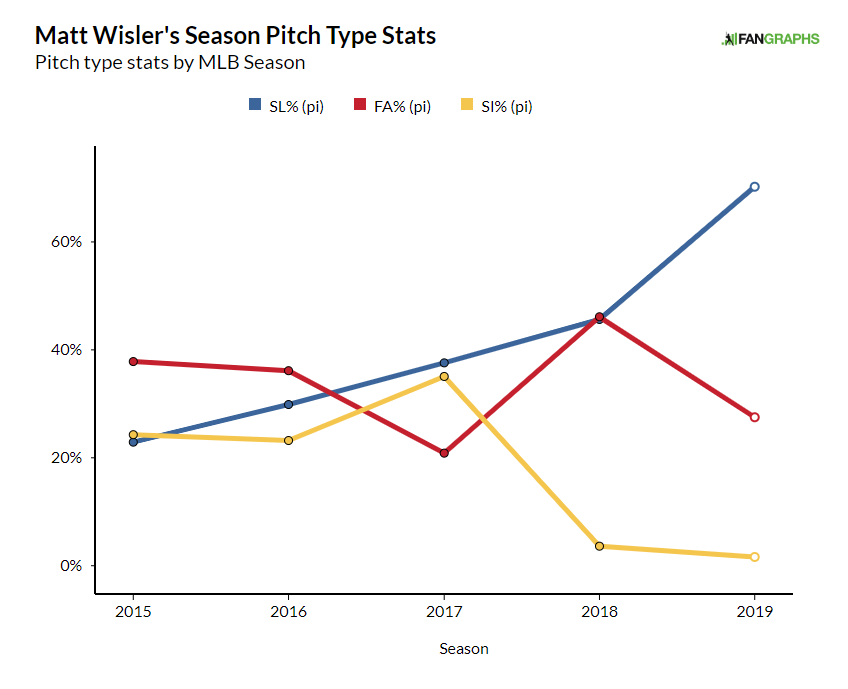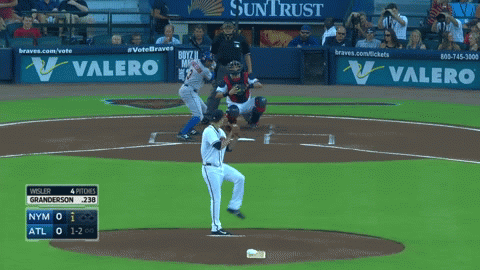The Twins Search for Gold on the Waiver Wire
While championship retrospectives are still being read and written, the rest of baseball is gearing up for the offseason. Immediately following the World Series, there’s always a flurry of activity as players come off the 60-day injured list, and teams get their 40-man rosters in order and begin the long process of building for next season. During these initial days of the offseason, the waiver wire is flooded with players who were removed from their team’s roster. With so many players shuffling around, these minor moves can get swept under the rug pretty quickly. After all, it’s unlikely a waiver claim in November will have much of an effect on a team’s fortunes next season. But sometimes the waiver wire holds a piece of true gold amidst all the pyrite.
Last year, the Rays claimed Oliver Drake from the Twins on November 1. It was the fourth time Drake had been claimed off waivers, with the Twins his seventh team in 2018. He was later designated for assignment three times that offseason, claimed by another team, and then traded back to the Rays in early January. That’s not exactly the ideal blueprint for how these waiver wire claims should go, but Drake’s performance during the 2019 season was as good as the Rays could have hoped for (3.87 FIP, 0.5 WAR).
The Twins are hoping to uncover their own piece of treasure in Matt Wisler. Claimed off waivers from the Mariners, Wisler certainly looks the part of roster chaff. A former top prospect, he was included in the first big Craig Kimbrel trade before he could make his debut with his original team, the Padres. He struggled in the Braves rotation for a couple of years before getting moved to the bullpen in 2017, and has bounced around the league the last two seasons, from Atlanta to Cincinnati in 2018, then back to San Diego in 2019, and finally to Seattle. Since making the transition to relief work, he’s posted an ugly 5.89 ERA and a 4.63 FIP across 123.2 innings, accumulating 0.4 WAR in three seasons.
Besides his long-forgotten prospect pedigree, Wisler looks exactly like the kind of depth that gets shuffled around in November before getting buried on the depth chart once the offseason begins in earnest. But digging below the surface reveals the potential for gold. Since 2017, Wisler has increased his strikeout rate at each stop in the majors, from 14.4% with the Braves to 30.5% with the Mariners. His ability to prevent runs hasn’t benefited from all those extra strikeouts, but it gives him an intriguing foundation that could be honed with a little development.
As a starter, Wisler relied on a four-pitch mix, but his best two pitches were his fastball and his slider. That led some to project a role as a late-inning reliever, but he stuck in the rotation for a couple of years, and once he did make the transition to the bullpen, his fastball didn’t see the normal velocity spike. That didn’t really matter because he started relying on his plus slider more and more as he settled into his new role:

He threw his slider more than 70% of the time in 2019. That’s the highest rate of sliders thrown by any pitcher in the majors this year with a minimum of 250 pitches thrown. But beyond the sheer number of sliders he threw, the pitch was also almost completely different from the one he was throwing previously:
| Year | Velocity | H Mov | V Mov | Spin Rate |
|---|---|---|---|---|
| 2017 | 81.8 | 5.5 | 0.2 | 2596 |
| 2018 | 82.4 | 4.7 | -0.3 | 2401 |
| 2019 | 83.8 | 3.1 | 1.2 | 2478 |
| Change | 2.0 | -2.4 | -1.0 | -118 |
He threw his slider harder than ever in 2019, averaging almost 84 mph and topping out at 88 mph. But that added velocity came at the expense of some of the two-plane break that he had featured throughout his career. Instead of a slower, slurvy slider with tons of horizontal break, he was now throwing a harder, diving slider. Back in 2015, his slider had 6.8 inches of horizontal break; his new slider breaks around half as much as it used to. The difference is pretty easy to spot. This slider was thrown to earn Wisler’s first strikeout of his career back in 2015:

And here’s what his slider looked like this year:
His slider has always been a deadly weapon no matter how he threw it. He’s maintained a whiff rate over 40% with the pitch throughout his career, and adding some velocity didn’t make that already elite whiff rate budge. Since he simply threw so many sliders, he posted a career high 14.9% swinging strike rate in 2019. That alone explains how his strikeout rate spiked so high.
He may not be getting any additional whiffs but the change in the pitch’s shape has resulted in a few more groundballs when the opposing batter is able to put the ball in play. It’s not a drastic difference — his batted ball profile still leans overwhelmingly towards fly balls — but it did help him run his highest groundball rate since 2016. He really needs those additional groundballs because the one thing that he’s struggled with throughout his career has been home runs; he allowed 10 in just over 50 innings pitched this year. Because his fly ball rate is so high, his home-run-per-fly-ball rate isn’t outrageous, but he simply can’t continue to allow that many dingers if he wants to be a valued member of a bullpen.
Changing the shape of his slider has helped him create a tighter pitch tunnel with his fastball too. Wisler’s fastball doesn’t have much horizontal movement. It’s a straight, riding fastball that isn’t really outstanding in any way. But when he pairs it with his hard, diving slider, batters have a harder time picking up either pitch before the decision-making point.
| Year | Release Distance | PreMax |
|---|---|---|
| 2017 | 1.83 | 1.64 |
| 2018 | 1.55 | 1.67 |
| 2019 | 2.01 | 1.42 |
| Change | 0.18 | -0.22 |
A consistent release point is often a critical component of a good pitch tunnel but Wisler’s release point varied by more than two inches this year, an increase of half an inch over last year. But his average Pre-Tunnel Maximum Distance — the distance between back-to-back pitches at the decision-making point — was lower than ever and below the league average of 1.54 inches for the first time in his career. Without the looping, horizontal movement of his slurve, his slider looks a lot like a hard curveball now, which would pair well with his four-seam fastball.
Wisler throws one good pitch. You could make an argument that his slider is among the best in baseball. But the rest of his repertoire is rather lackluster, which explains why he turned to his slider almost three quarters of the time this year. Despite all those breaking balls, his zone rate stayed relatively stable. Even though he located his slider in the zone more often, batters still couldn’t make consistent contact with it, leading to a plummeting zone contact rate. Oh, and he also posted a career high chase rate. If there was ever a pitcher who might be able to get away with throwing a single breaking ball exclusively, Wisler is a good candidate.
With Twins pitching coach Wes Johnson responsible for reviving the careers of Jake Odorizzi, Martín Pérez, and others this year, Minnesota has the resources to help Wisler continue to develop as a reliever. He only just turned 27 and his slider gives him a plus pitch to build on. Maybe the Twins will be able to squeeze a little more velocity out of his fastball or maybe they simply have him throw his slider exclusively. There’s no guarantee that any amount of tinkering will unlock Wisler’s latent abilities, but claiming him on waivers is a low-risk gamble that could pay off next season.
Jake Mailhot is a contributor to FanGraphs. A long-suffering Mariners fan, he also writes about them for Lookout Landing. Follow him on BlueSky @jakemailhot.

Reviving Perez? Perez was good for a few weeks….but after that?